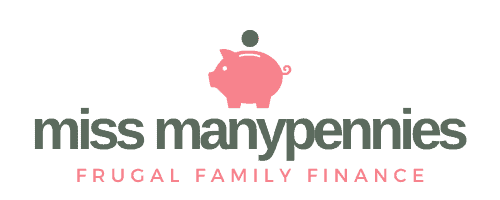How To Budget Using the 50/30/20 Budget in 5 Easy Steps
Posts contain affiliate links, see disclosure for more details.
The first step to reaching any goal is to create a plan of exactly how you are to get there and then adjusting along the way. The same goes for your finances. If you have a goal to save up for a new car or a goal to retire at a certain age, you need to have a plan in place. This is also known as a budget.
Creating and using a budget is simply just creating a plan for reaching a certain financial goal. When you make a budget for yourself, you will get an understanding of exactly how much money you are bringing in and exactly how much money you are spending. You can then start to formulate a plan to reach whatever financial goals you may have.
What is a percentage-based budget?

A percentage-based budget is one of the easiest ways for someone to budget. Most budgets require that you set aside a specific dollar amount for specific categories of spending. However, with a percentage based budget, you simply take your income, and assign each category you want to include in your budget a percentage.
Many people prefer percentage-based budgets because they are quick and easy to implement and do not require the attention to detail that other budgets demand. If you try to track every detail about every purchase you make, you will be much less likely to stick to your budget. Eventually the burden of tracking every purchase will become too much and you will stop tracking your spending all together.
Who does a percentage-based budget work for?
Percentage-based budgets work best for people who are just starting to budget their money. It allows the person to set as many or as few categories for their budget as they would like. A percentage-based budget is highly customizable and provides great flexibility from person-to-person.
As someone gets more advanced in their budgeting and has a better idea of how and where they spend their money each month, they might advance to a more detailed budget with more specificity in the amounts for each category of spending.
What is the 50/30/20 budget rule?
The 50/30/20 budget rule is the most common percentage-based budget and one of the most well-known budgeting methods out there today. The basic idea is that 50 percent of all income should be set aside for all needs, 30 percent should be set aside for all wants, and the remaining 20 percent should be set aside for savings/investing and debt repayment.
Here are 5 quick steps to get your 50/30/20 budget set up and ready to go today.
1. Calculate your after-tax income
The first step to any budget is figuring out what your after-tax income is. Without knowing your income, there is no way you can determine how much money you have to spend and save/invest.
When you calculate your income, you should include all sources of income. This includes your salary, side hustle income, child-support payments, or even something like a monthly check your grandma and grandpa send you. Any money coming into your bank account should be included in this number.
This number is pretty easy to calculate if your only source of income is a salary. However, it can be a bit more difficult if you are self-employed or do freelance work as this number may change from month-to-month.
This is another reason why the percentage-based budget works so well. The amount set aside for each category can change with your income as opposed to a budget where specific amounts are set aside for each category.
Once you total up all of your income, you should then subtract out any taxes you have to pay. The remaining amount is your after-tax income and will be the foundation for the rest of your budget. Each amount for each category will be based off of this figure.
2. Set aside 50% of your after-tax income for needs
Setting aside 50 percent of your after-tax income for needs is as simple as multiplying your after-tax income by 50 percent. This is the amount you have to spend on absolute necessities. Absolute necessities are things that you and your family need to physically survive. This can include things such as:
- Mortgage or rent payments
- Groceries/food (not including fancy meals, happy hours, etc.)
- Utilities
- Basic clothing
- Medical expenses
- Gas and other transportation expenses – if that is how you get to your source of income
It is important to remember that things like a second or third car or extravagant spending on clothing is not considered a necessity. These things would fall into the wants category. Only absolute necessities should be included in this category of spending.
3. Set aside 30% of your after-tax income for wants
Similar to the needs category, simply take your after-tax income and multiply it by 30 percent. This amount is what you can spend luxuriously on anything you want. This could include:
- Eating out at restaurants
- Date nights
- Going to the movies
- Nights out on the town
- Purchasing designer brand purses or handbags
Basically anything that you wouldn’t need to survive but provides you some sort of joy is a want.
The beautiful part about a percentage-based budget is that it is easy to adjust. If you have a low income and live in a high cost of living area, or you have a fluctuating monthly income and it wasn’t as much as you had expected it to be, you may need to adjust your needs budget to 55 or 60 percent of your income and you can reduce your wants category to 20 or 25 percent.
It is important though that you always adjust your wants category down before ever touching your savings category. You should try to avoid adjusting your savings category in any way except to increase the percentage.
4. Set aside 20% of your after-tax income for savings
The last part of the 50/30/20 budget is to allocate 20 percent of your after-tax income to savings. When we say savings, we mean savings very loosely. We really mean that 20 percent of your income should go towards building wealth or eliminating debt.
If you still have pesky student loan debt lingering around, then you can use this 20 percent of your income to help pay it down. If you don’t have any debt, then you should be putting this money into investments or saving for retirement.
This category should not be adjusted. You should only reduce your savings percentage after you have completely eliminated your wants category of spending. The savings category is the second most important category right after your needs.
5. Monitor and adjust your budget as needed
As with any budget, you should always monitor it each month and adjust it as needed. If something isn’t working out or you just simply don’t like a percentage-based budget, then adjusting it or completely scrapping it and starting over with a new budget might be the best option for you.
Everyone will have a different preference when it comes to budgeting. Just like with dieting or exercising, it is important to find the one that works best for you so that you can stick to it. Budgeting is the key to reaching financial independence so you want to make sure it is something you can commit to long-term.
Final Word
Creating and using a budget is a must if you want to start to build wealth. It is important to have a complete understanding of how much money you have coming in and how much money you have going out and where it is going. Once you understand the way you handle and spend your money, you can start to implement a plan to build true wealth and you will reach financial independence much quicker.
The 50/30/20 budget is a great way to budget your money because it is quick, easy, and provides great flexibility. However, if you would prefer to have more specific categories, with more specific dollar amounts, you may choose to use any other budgeting method that works best for you.
About the Author
Austin is the founder of The Logic of Money and has a passion for finance and helping others. He studied finance, investments, and banking as well as real estate and urban land economics in college. He hopes that he can share his knowledge and tips with others to help make personal finance less stressful for everyone. Follow him on Twitter, Pinterest, and Facebook!
Read more:
Pin it!










